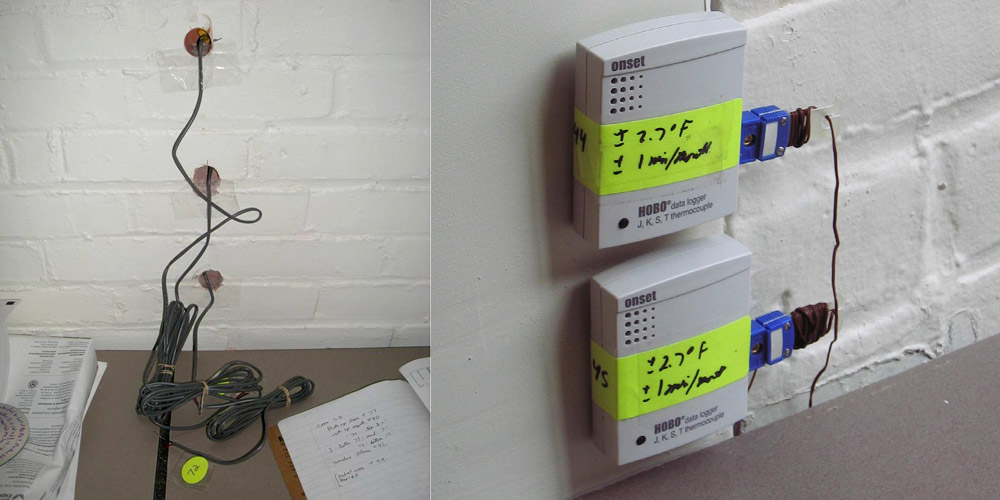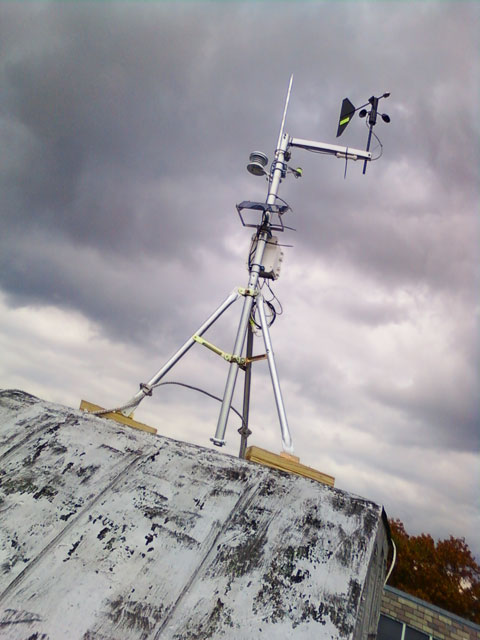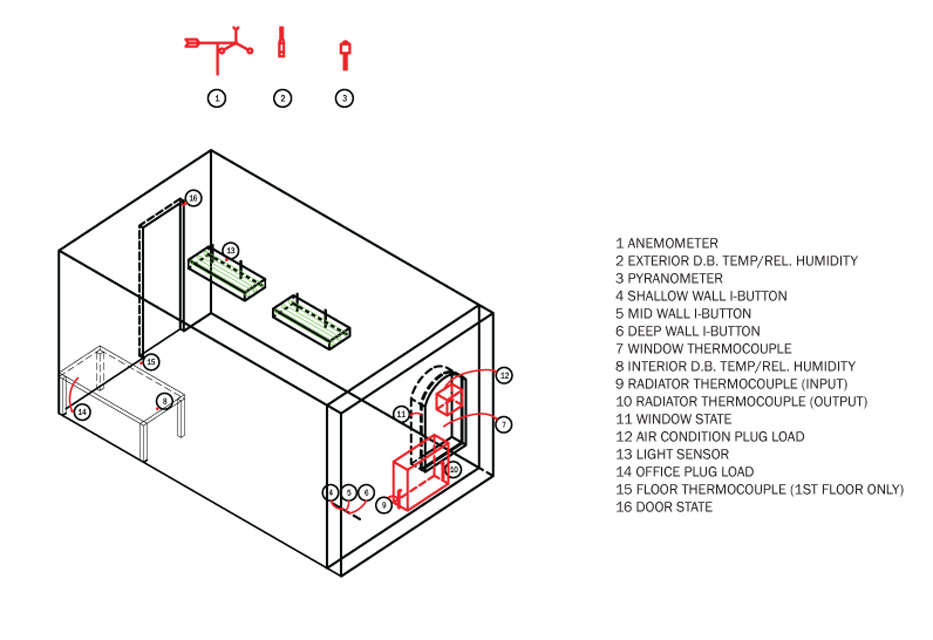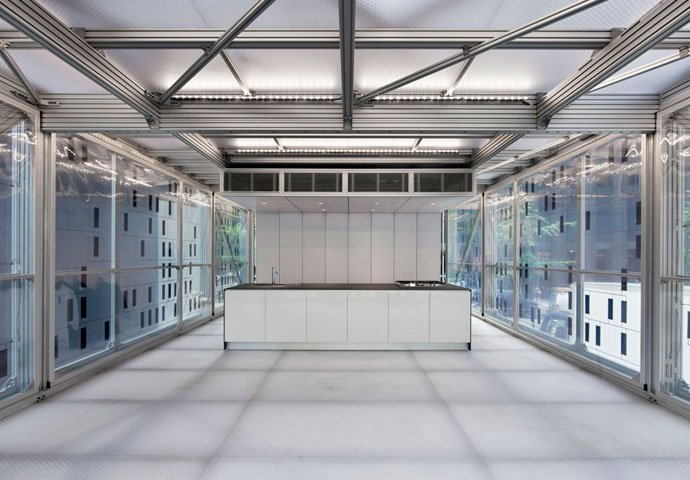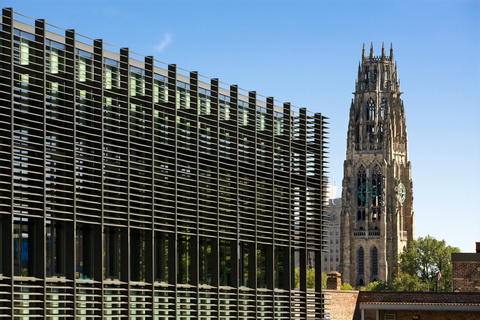How can we better understand the performance of historic buildings in order to develop a strategy for bringing them into the modern era?
Weather station placed atop Sage Bowers to track ambient conditions.
Yale University's campus contains a venerable yet aging crop of buildings, many of which need to be brought up to twenty-first century standards of energy efficiency and comfort. We have been working with Yale since the 1990s in their commitment to address this issue. During renovation work on Sage Bowers Hall—a 1920s-era masonry building containing classrooms and offices for the School of Forestry & Environmental Studies—the structure proved to be an excellent test bed for evaluating thermal performance in order to provide the university with a strategy for improving the performance of similar buildings across campus.
At Sage Bowers Hall, two pairs of adjacent rooms—one east-facing, the other west-facing— were selected for monitoring. In each pair, insulation was added to walls in one of the rooms, and sensors were installed in both modified and unmodified walls for comparison. A suite of sensors collected a full year of data, measuring attributes including room temperature and relative humidity; wall temperature at varying depths; window temperature (of both the surface and the space between layers of glass); floor slab temperature; lighting; door position (open or closed); and energy consumed by office equipment. Because there were no sensors available within the architectural industry that could be easily deployed to measure all of these parameters, sensors designed for other industries, such as bridge construction and agriculture, had to be improvised. This sensor package was coupled with a rooftop weather station.
Diagram of sensor deployment at Sage Bowers Hall.
Data was collected quarterly during dedicated trips to Yale by KieranTimberlake researchers. After one year of monitoring, we were able to tell the client how much energy the building was losing, and when and where the losses were occurring. This information formed the basis for strategies to boost the performance of Yale's historic 1920s- and 30s-era buildings. Among other modifications targeting both energy efficiency and thermal comfort, Yale ultimately chose to apply the lessons learned in minimizing the freeze-thaw weathering risk to building envelopes.
A comparison of temperatures in modified and unmodified test wall sections.
Unlike energy modeling, real-time monitoring in situ provides a tacit understanding of building energy performance, environmental response, and weathering that cannot be gained through simulation alone. The experience of managing a full suite of sensors and working with hard data to arrive at a design solution at Sage Bowers Hall motivated us to expand the capacities of our building monitoring technology and to pursue the development of a proprietary, architecture-specific Wireless Sensor Network that combines both hardware and software tools for data collection and analysis.


